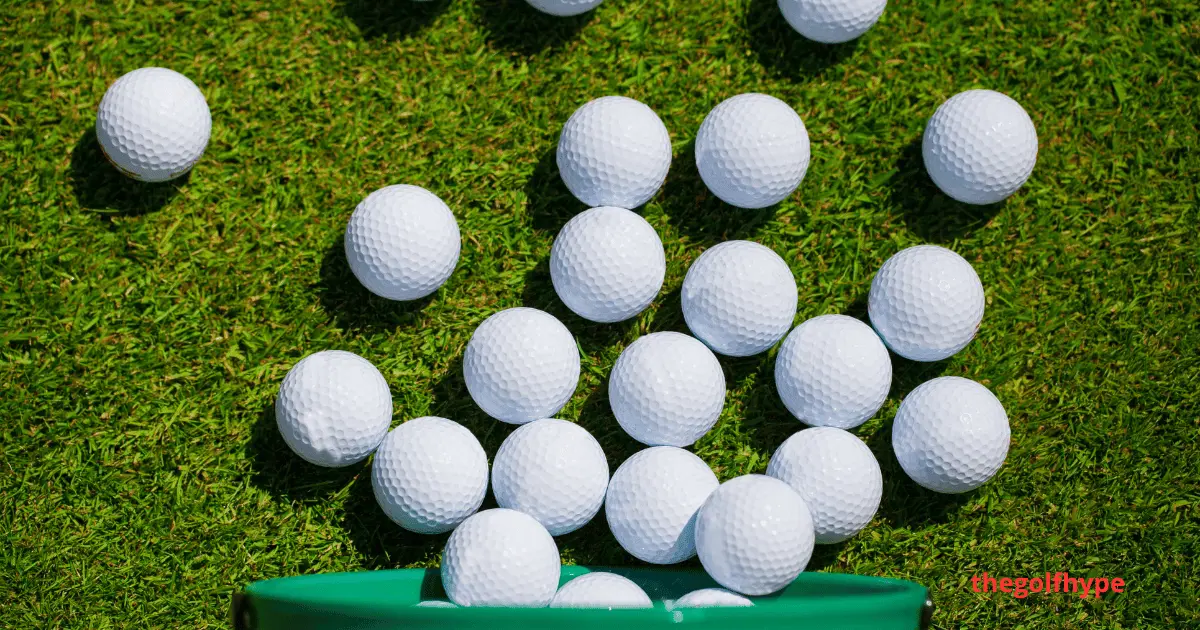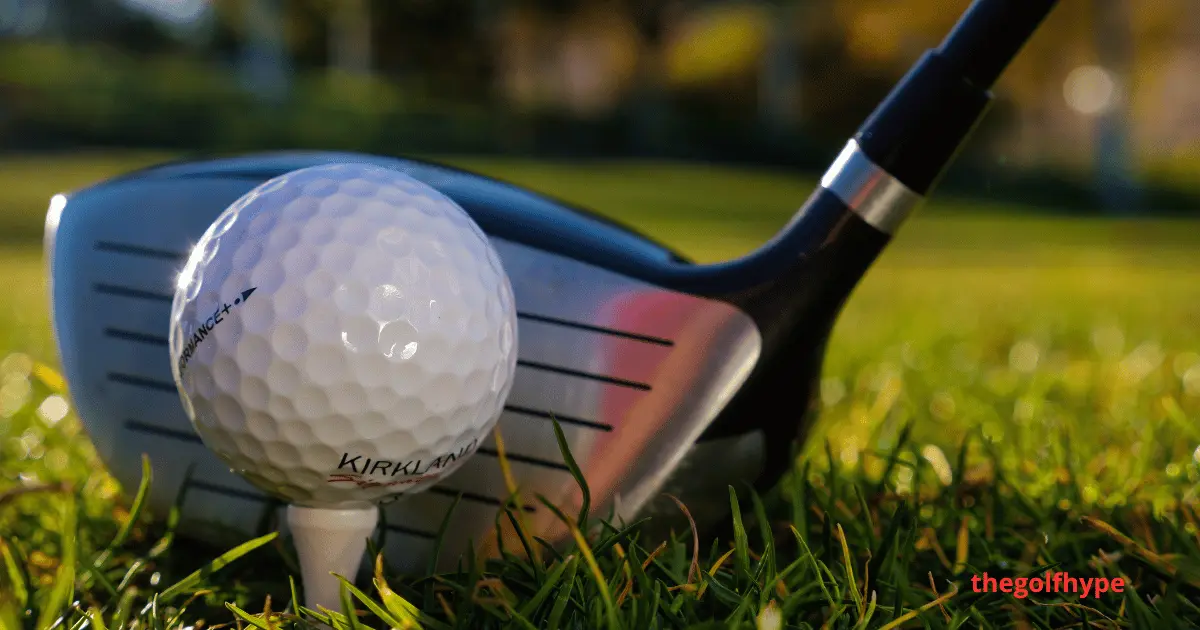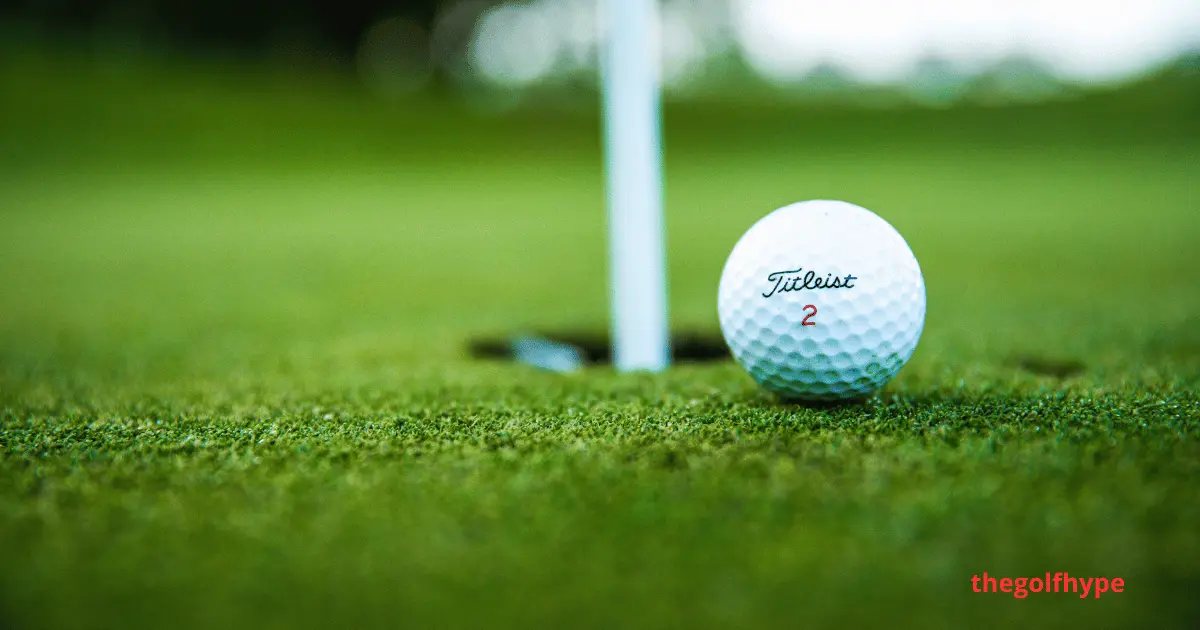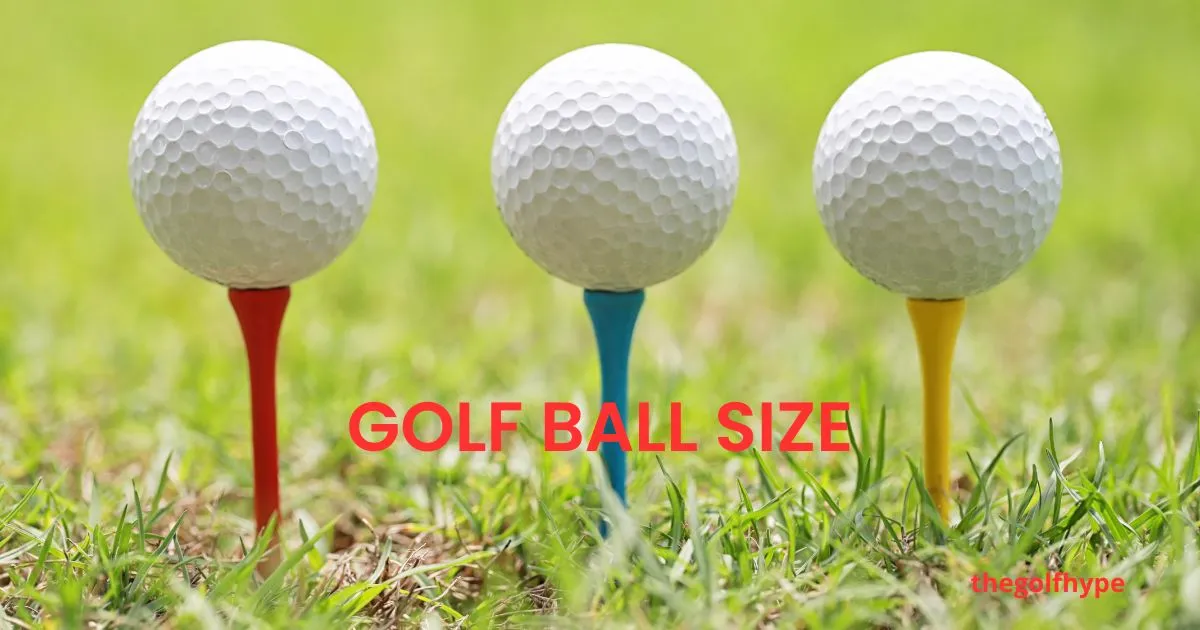When it comes to golf, every little thing counts—whether it’s the swing of your club or the dimples on the ball. But have you ever thought about the size of a golf ball? It may seem like a trivial thing, but the size of a golf ball has a big impact on its performance, compliance with the rules of the game, and even your game. Whether you’re an expert or just a weekend golfer, understanding the golf ball size—such as its diameter, weight, and how it measures up to official standards—can put you ahead of the pack on the course.
In this post, we’ll tell you everything you need to know about golf ball size. We’ll clear common misconceptions and explain why such a small ball is so carefully designed. Get ready to look at golf balls in a new way!
For example, did you know that a golf ball is approximately 1.68 inches in diameter? If it is smaller than that, it would be against the rules of the game. Likewise, its weight should not exceed 45.93 grams. These restrictions are in place to ensure that every player plays on the same terms.
So the next time you play golf, pay attention to this little ball—it could improve your game!
The Evolution of Golf Ball Size: From British to American Standards

Golf clubs haven’t always been as big as they are today. Over the centuries, their size has undergone many changes. These changes have been due to changes in materials, manufacturing methods, and regional preferences. Let’s take a trip back in time to see how golf club sizes have changed.
(And to make this easier for you, think of it this way: the equipment people used in the past depended on what they had available. For example, early golf clubs were made from tree wood, and they were very different from today’s clubs.)
British Golf Ball: Where It All Began
When golf first began in England and Scotland, players often played on golf courses called links. At that time, they used hard wooden balls. But these balls were difficult to control, so in the 18th century, players began using a new type of ball called a “feathery.”
This feathery ball was much softer than a wooden ball because it was filled with feathers and covered with a leather-like material. But it was very expensive to make. Often, players would miss two or three balls in a round, which was a huge financial burden for them.
In addition, the feathery ball was not always round. So when the player hit it, they did not know where the ball would go — it was like a lottery!
Then players began using a new type of ball made from the sap of a special tree in Malaysia. It was called a “gutti.” This ball was easy to make, could be repaired if damaged, and was also very cheap. Thus, the ballast ball became an excellent solution for players.
American Golf Ball: A Step Toward Modern Standards
In the late 19th century, the introduction of the “gutta” ball was a big deal. The ball was made from a type of rubber called gutta-percha. By then, it was popular because it was cheaper to make and stronger. Before that, people used balls called featheries, which were slightly smaller than the ballast balls.
In the early 20th century, American companies began experimenting with standard ball sizes. These efforts led to the golf ball we use today. Not only was it more stable, but it was also better for playing.
Thus, the development of the golf ball made the game more fun and accessible.
Key Differences Between British and American Golf Balls
According to the rules of American golf, as set by the USGA (United States Golf Association), a golf ball must be 1.680 inches in diameter, and weigh no more than 1.620 ounces, or 45.93 grams. However, until the 1990s, the British body R&A (Royal and Ancient Golf Club) allowed the use of balls that were smaller than 1.68 inches. These smaller balls were called “British balls” by professional and amateur golfers.
In general terms, according to American rules, a golf ball must be within certain limits in size and weight. But in the UK, smaller balls were also used in the old days, which are no longer officially used. People called them “British balls” because they were something different and special.
In simple terms, the rules for golf balls used to vary from country to country, but now everyone follows the same rules.
Modern Golf Ball Size: Official Rules and Standards

Nowadays, the size and weight of a golf ball are very closely monitored. They are regulated by organizations such as the USGA (United States Golf Association) and the R&A (Royal and Ancient Golf Club of St. Andrews). The job of these organizations is to ensure that the balls used by professional players are of a standard. That is, the size, weight, and performance of the ball must comply with certain regulations.
Such rules are in place so that there is no unfairness in the game. If someone’s ball is too big or too small, its movement may also be different, which can destroy the spirit of the game. All these regulations are in place so that every player plays on the same level and no one takes advantage of it.
Did you know? The standard diameter of a golf ball is about 42.67 millimeters, and its weight should not exceed about 45.93 grams. Such specific rules make the game organized and interesting.
What is the Diameter and Weight of a Golf Ball?
To put it simply, according to government regulations, a golf ball must be at least 1.68 inches (4.27 cm) in size and weigh no more than 1.62 ounces (45.93 grams). This size makes the ball large enough to be easily visible during play and also has the right weight so that it can travel a long distance when hit.
The advantage of such a golf ball size and weight is that it is not only easy for the player to see but also allows him to reach the best distance when hitting it. All these rules are designed to ensure fairness in the game and equal opportunity for every player.
Let me also tell you that the structure and material of the golf ball also affect its flight. But I will try to explain this topic to you in detail later. 😊
The Role of Dimples in Golf Ball Design
There is no rule about how many dimples (small bumps) a golf ball can have. However, the best and most popular golf balls on the market today usually have between 300 and 400 dimples.
There is no specific regulation on the number of dimples or their shape on a golf ball, but it is important that the dimple pattern and the structure of the golf ball meet the standards of the USGA (United States Golf Association). This way, the ball is legally fit for use in the game.

This means that it is good to keep these things in mind when you are playing golf, but not too much to worry about. Just make sure the ball is based on the correct rules!
Types of Golf Balls: Two-Piece, Three-Piece, and Multi-Layer Explained
Not all golf balls are created equal. Depending on your skill level and playing style, you might prefer a two-piece, three-piece, or multi-layer ball. Let’s break down the differences.
Two-Piece Golf Balls: Simplicity and Distance
Two-piece golf balls are the most commonly used type, especially among new players. These balls have two main parts: an inner, solid, flexible part that makes them strong, and an outer, hard core that gives them the ability to last longer. These balls are designed to travel as much distance as possible. This makes them ideal for players with a slower swing.
If you are a new player, these balls are a great choice to start with because they are easy to use and allow you to hit longer distances. In addition, these balls are more efficient and reliable, which makes playing golf more enjoyable.
Three-Piece Golf Balls: Control and Spin
A golf ball called a “three-piece” is preferred by most intermediate and expert players. This type of ball has three different layers: a hard outer layer, a soft middle layer, and a soft inner layer. All of these layers work together to give the player better control and the ability to earn more on the ball’s path.
For this reason, these balls are perfect for players who want to get the ball closer to the green with great precision. If you are a player who wants more control over your shot, this ball may be the best choice for you.
To understand more:
Generally, new players prefer balls that are easy to use, while experienced players prefer this type of “three-piece” balls because they allow them to play with more improvement. Thus, by adopting this ball, the player can take his game to new heights.
Multi-Layer Golf Balls: Advanced Performance
A golf ball with multiple layers provides a variety of benefits to professional players. These balls are designed to provide softness, spin control, and distance. Although all golf balls are the same size and weight — 1.68 inches (42.67 mm) in diameter and 45.93 grams (1.62 oz) in weight — their internal construction varies.
This type of ball has several small layers surrounding a small core. When the ball hits the club, these layers shape its flight, producing the best results for players. Top golfers like Rory McIlroy, Tiger Woods, and Bryson DeChambeau also use this type of ball.
Imagine how great old-time greats like Arnold Palmer or Jack Nicklaus would have been if they had this technology! Balls like this have redefined the game of golf.
Frequently Asked Questions About Golf Ball Size
Let’s address some of the most common questions about golf ball size, from its dimensions in centimeters to its weight and volume.
Are All Golf Balls the Same Size?
Yes, all golf balls used in professional play must meet the same size and weight standards. However, recreational balls may vary slightly in size or weight, so it’s always a good idea to check the specifications before purchasing.
When Did Golf Balls Change Size?
The size of golf clubs changed in the early 20th century. Before that, the size of the clubs was different everywhere. Some were bigger, some were smaller. Their size varied depending on the manufacturer and the region. But then the two major golf organizations, the USGA (United States Golf Association) and the R&A (Royal Enquiries Golf), standardized the size of the clubs. Now all golf clubs were made the same.
Thus, this change was made to make the game easier and more organized. Now players no longer have to worry about the size of the clubs.
What Is the Size of a Golf Ball in Centimeters and Millimeters?
A standard golf ball has a diameter of 4.27 cm (42.7 mm) and a circumference of approximately 13.42 cm (134.2 mm). These measurements are consistent across all professional-grade balls.
How Much Does a Golf Ball Weigh?
The USGA and the R&A have come together to create a rule to keep golf ball weight within legal limits. Now, the maximum weight of a golf ball cannot exceed 1.62 ounces (45.93 grams).
A smaller ball that is slightly heavier can help stronger hitters travel longer distances.
(This means that golfers can still benefit from the weight of the ball, but within the rules!)
Why Is a Golf Hole 4.25 Inches in Diameter?
The size of a golf hole is directly related to the size of the ball. A 4.25-inch diameter provides enough space for the ball to fit comfortably while still presenting a challenge for players.
What Is the Volume of a Golf Ball?
The volume of a golf ball can be calculated using the formula for the volume of a sphere: V = (4/3)πr³. With a radius of 2.135 cm, the volume is approximately 40.68 cm³.
What Is the Circumference of a Golf Ball?
The circumference of a golf ball is approximately 13.42 cm (134.2 mm). This measurement is important for understanding how the ball interacts with the clubface and the air.
Golf Ball Size in Centimeters and Millimeters: A Quick Reference
For easy reference, here’s a summary of golf ball size in centimeters and millimeters:
- Diameter: 4.27 cm (42.7 mm)
- Circumference: 13.42 cm (134.2 mm)
- Volume: 40.68 cm³
Final Thoughts on Golf Ball Size and Its Impact on the Game
Golf ball size may seem like a small detail, but it has a big impact on the game. From its historical evolution to its modern-day standards, the size of a golf ball influences everything from distance to control. Whether you’re curious about how big is a golf ball in cm or what’s the diameter of a golf ball. Understanding these dimensions can help you make more informed decisions on the course. So the next time you tee up, take a moment to appreciate the science and history behind that little white ball—it’s more than just a piece of equipment; it’s a key part of the game.


